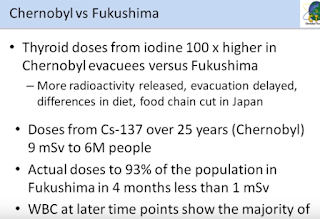On Half Life and Radiation Part III

I do hope this will be the last of this topic for a while, honestly, it's getting pretty dull for me even! I should start where I left off last time, here is a decay chain that happened all the time inside the Hanford nuclear reactors in Hanford Washington during World War II (it happens as well at other reactors but the historical significance of what happened at Hanford is too much to ignore). So what is going on here? Well we start with Uranium (red circle, I've colour coded by type of atom), now natural Uranium is more than 99% U-238, we bombard that Uranium with a neutron (the +n, no charge) that increases the weight by 1, to U-239 and still 92 protons. Then one neutron breaks apart into a proton and an electron (called a Beta particle) the beta is so energetic it zooms off into space, thus beta radiation. The proton sticks around and our atom has one extra proton, so 92+1 = 93, which is Neptunium. A second Beta decay occurs and our Neptunium becomes Plutonium. ...

